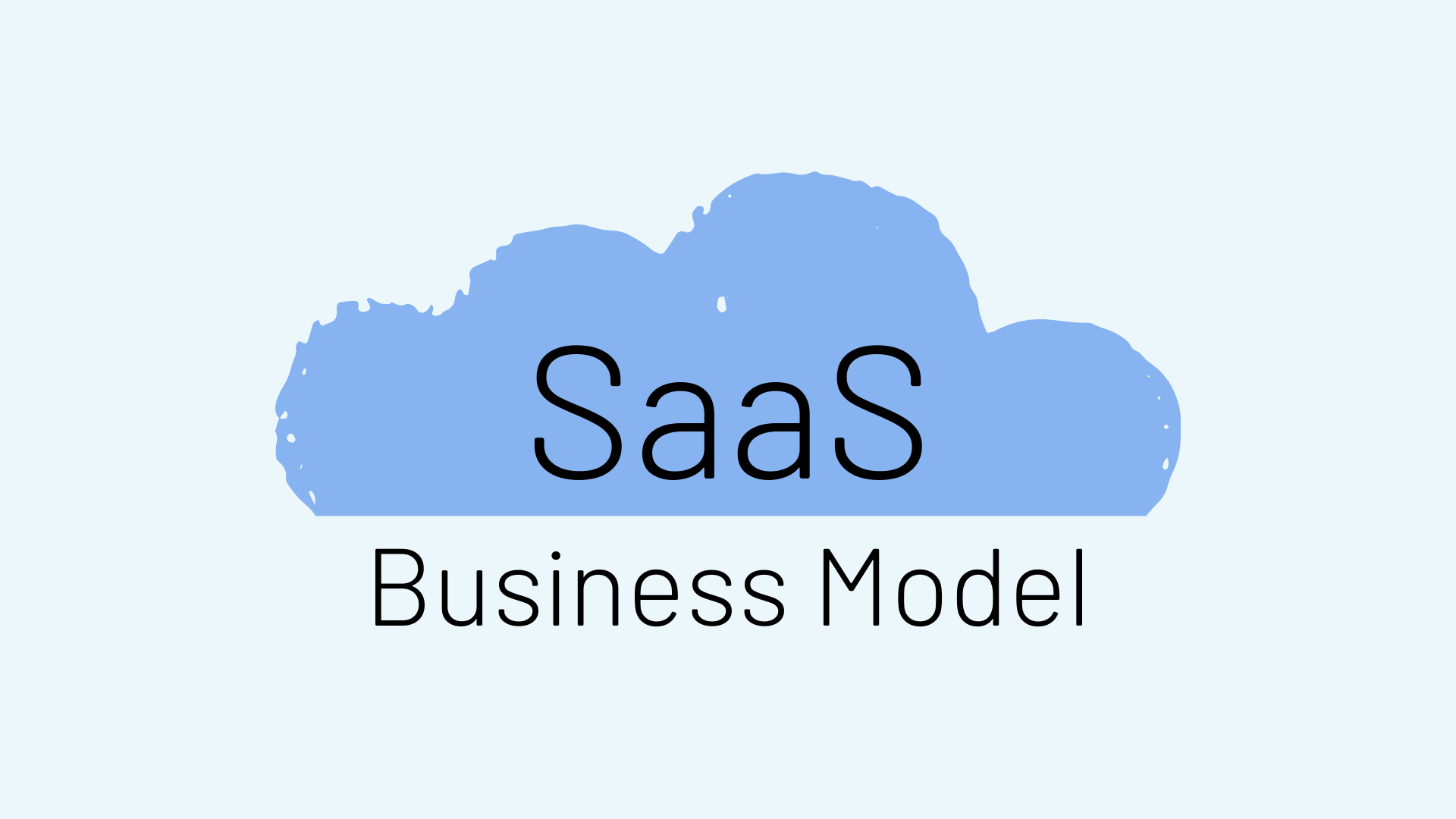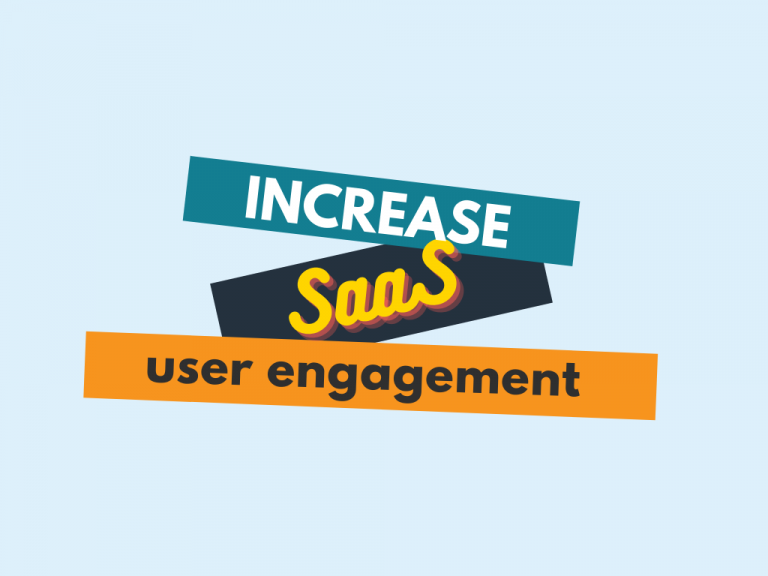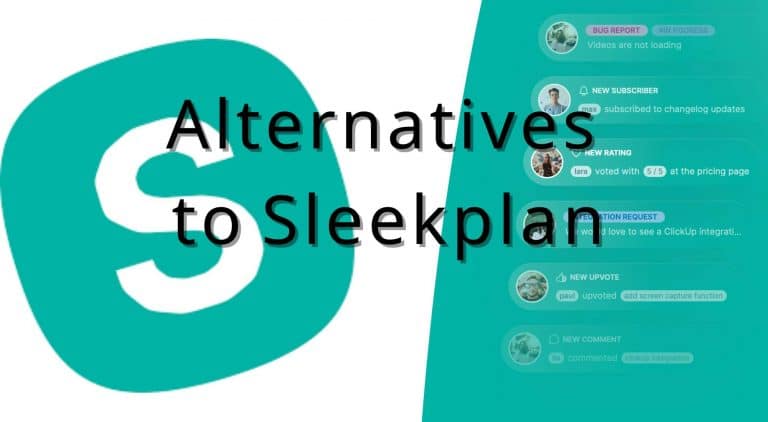The SaaS business model has become one of the rapidly developing and changing business models since “SaaS” was first coined by John Koenig at a conference in March 2005.
Thinking of its history, this business model is relatively new, but it is also a highly demanded model with a huge market value.
Looking at SaaS companies like Zoom, Slack, Shopify and many more, it seems like we will be more acquainted with this model soon.
But, what is the SaaS business model exactly? How does it work? What are its benefits?
In this article, we will dive into the SaaS business model and explore its essentials and benefits.
What is the SaaS Business Model?
The basic definition of the SaaS business model is selling cloud-based software to its customers via a subscription model. This may be a monthly or annual subscription or per user or business.
In other words, it provides hosting in a software application and makes it accessible to clients on any internet-enabled device.
Subscription payment underlies this model and, therefore, is at the very centre of it.
With this subscription-based business model, SaaS differs from traditional business models that rely on one-time purchases.
This difference between the SaaS business model and other traditional business models wipes out the need for an end-user licence. It enables its customers to be licenced to easily log in to their account and get full access rather than setting up the software and infrastructures they bought.
What are the Essentials of the SaaS Business Model?
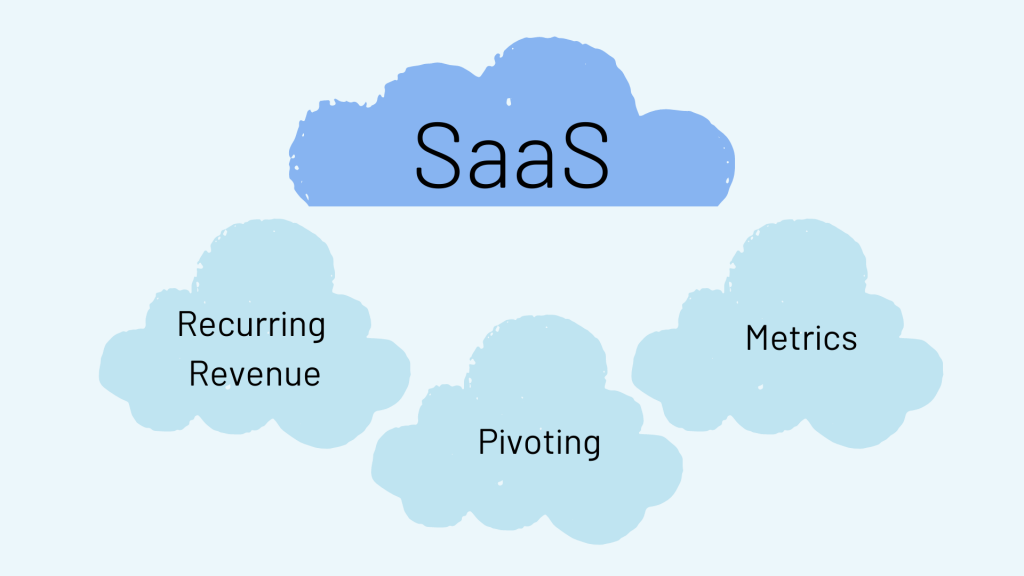
- Recurring Revenue
SaaS doesn’t sell product, sell a long-term service. As it differs from buying a product, this subsription-based business model allows for predictable revenue forecasts. Looking ahead with a good certainty is one of the essentials that constructs this business model. - Pivoting
SaaS product is subject to develop constantly. While other business models establish a developed new version of their previous product, SaaS consistently improve the existing product and provides small updates to its services regularly. This minimizes the time customers experience user downtime. - Metrics
Every business and industry rely on metrics. It always matter to keep track. However, SaaS has different metrics to measure a company’s financial, customer engagement and product management issues. They keep the track of health and sustainability of their operations with SaaS Metrics.
What Are the Stages of SaaS Business Model?
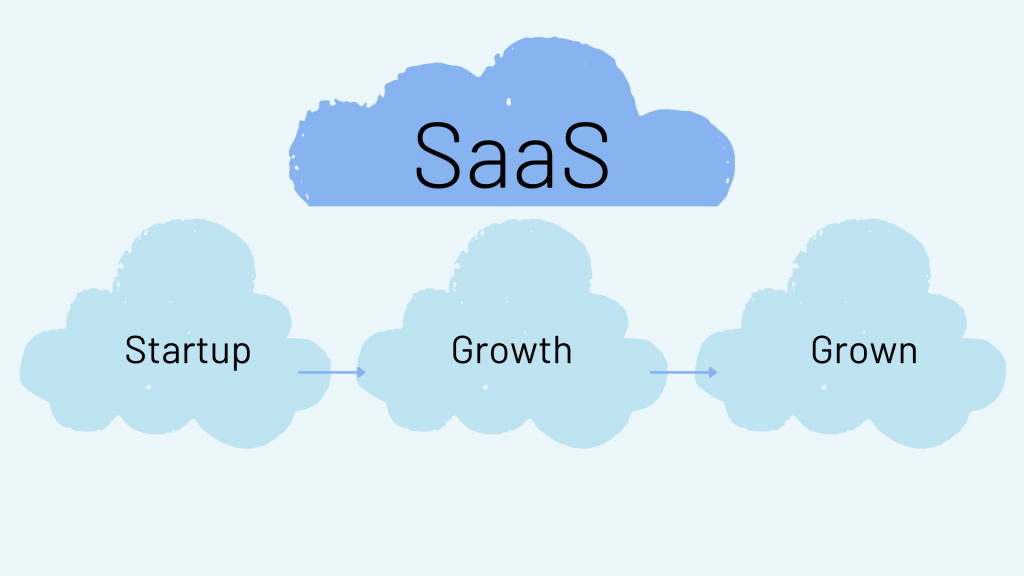
It takes a relatively good amount of time to create a SaaS business model. Like many other business models, it can be broken down into three stages.
- Startup
After long hours of planning, finally you start your journey.
You have a well-developed idea on solving an existing problem in the industry and its time to start up!
In the early phase of a SaaS business, your product is still in its development process including initial traction processes. Therefore, in this stage, you should identify your potential customers, serve the value of your product to them
Other things to focus on should be refining the product and features, establishing business relationships, making the first hires and seeking for financial backing.
The questions to ask are “What is my target audience?” “How can I engage with them?”, “Does my product works well?” and “What kind of operations my business need?” - Growth
In the growth stage, things start to speed up.
This stage is an important transition phase for your SaaS business. Therefore, the full focus should be on raising funds, investing in product and implementing metrics and analytics.
One of the essential aspects of this stage is to efficiently maintain your customer onboarding process to reach more customers while retaining value proposition.
You should ask, “Is it possible to find funding at this level of my product?” and “Are my existing audience pleased with my product and features?” and “How to Increase SaaS User Engagement?“. - Grown
Achiving Grown is the holy phase of a SaaS business.
At the last stage, the main focus turns to continue growth and scaling. The company has reached its grown model with a reliable product which means that it has proved its value and now has a well-defined target with well-defined audience.
Company is now has a good MRR and ARR and all the metrics are stable. The focus should be on securing scale and compete with competitors!
3 Benefits of the SaaS Business Model
No Need for Inventory
As your business is set in a cloud, you don’t need physical equipment; therefore, physically producing and distributing. Inventory stocks and all the materials are so old school. The absence of these materials means easier scale.
Rapid Growth
With the SaaS business model, growth can be happen really quick. If you find a gap in the market and fill it with a valuable product, you cannot imagine how fast your business will grow.
Easy to Update
SaaS products enable developers to update and improve very easily. The controlling of the product and its environment is very easy because SaaS lives in the cloud.
Overall Idea
The SaaS business model with its essentials and benefits is growing rapidly, and it provides you with countless opportunities.
Rising market demand and competition make this model very dynamic; therefore, pay attention to each stage and work on them!
SaaS onboarding is also a big part of creating and maintaining a successful SaaS business model. So, check SaaS Onboarding Best Practices to Improve Customer Success in 2021!

